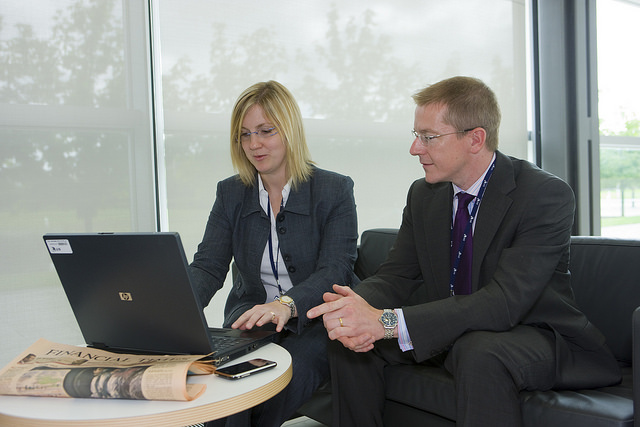Teaming Up to Get Things Done
Most professionals develop a preference on how they work on projects, whether it’s on their own or with a group of people. Chances are, even if you’d rather go it alone, there are times when it makes greater sense to team up with a partner or a group.
What’s in it for you?
There are many benefits to teaming up with your colleagues. Your outlook on working collaboratively will affect your experience, so go in with a positive attitude. With that approach in mind, the first benefit you can reap is a chance to collaborate and brainstorm ideas with someone in a similar position but with a different perspective.
Another benefit to teaming up is sharing the responsibility for the project. As you work together, identify what each of your strengths are, and divvy up the workload accordingly. You can each offer your unique approach and you may learn a few new tricks that you can apply to other work projects.

A third positive outcome is expanding each other’s professional network. Introduce your project partner to your network via LinkedIn, at after hours networking events, at conferences and other opportunities. People like doing business with friends and associates, so teaming up can be a good business opportunity for the long haul.
What’s in it for the company?
When teammates work together effectively, the company also wins. Collaboration leads to improved communication and efficiencies throughout the company, especially when the project members are from different departments. Approaching a problem from two perspectives may shed light on how a project can affect a department’s workflow. Such insights could improve the way the project is developed and shared, making a greater impact company-wide.
Project partners may find increased motivation to succeed in their collaborative efforts. Teaming up with a colleague adds a layer of accountability that motivates people to fulfill their responsibilities. Knowing that a project can’t move forward without your half of the work being accomplished encourages everyone to do their fair share and some may even contribute a little extra.
Hopefully teammates will also develop mutual respect for one another as they work together. A company culture that supports a respectful environment can lead to overall growth.
Steps to Team Up Effectively
Start by getting a game plan together. Identify the goals of the project and create a list of goals that you can use to determine whether or not you are on track to meet your deadline. So often people dive into a project head first without getting on the same page about the end results.

Once you have the plan in place, set up a timeline and assign the key tasks, making sure that every item is assigned. There are many project management software systems available to help keep the project organized. Some free options include Asana and MeisterTask.
As mentioned, it’s important to assess your strengths and that of your project partners when determining who will accomplish each task. Be sure to keep the assignments fair, so that one person isn’t shouldering more of the job than the other. It’s important to be clear about the responsibilities.
In order to succeed in with your project goals, you will need to communicate effectively. Start by deciding the methods you will use to correspond such as email, text, phone calls or perhaps the project management software. Agree on a plan for getting together to review the project.
Keep good records and save drafts of the various iterations of the project. Label your files and save them in an organized manner so that it makes sense to everyone on the team. You may also want to include a date when saving files so you can see at a glance the latest version of your work.
At the end of the project, write up a summary as to what worked well and what you would recommend moving forward. Share your results with your colleagues and celebrate the success of your work together.
